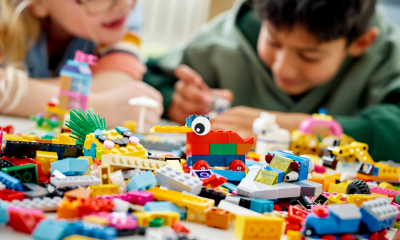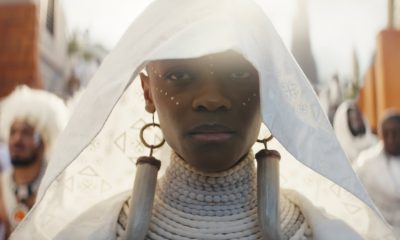Entertainment
‘The Crown’ Season 5 review: Debicki’s Diana reigns supreme amid a monarchy in crisis
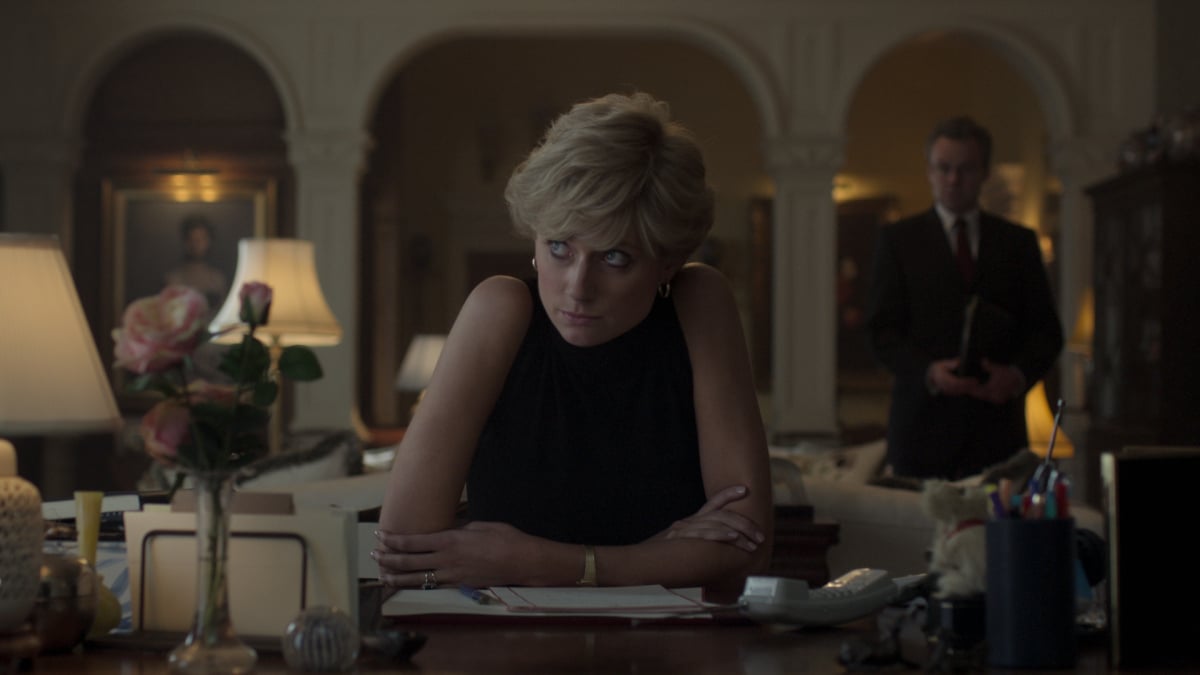
The ’90s were not, let’s say, a fun time for the British monarchy, who were scrambling to keep up with the times while enforcing unattainable, outdated appearances of an idealised family life. However, the ’90s certainly function as a fruitful time for The Crown, which strides into this new era in Season 5 with all the elegance, poise, and self-awareness of a certain revenge dress-wearer.
This is also marks the first season of Peter Morgan’s opulent series to debut on Netflix since the Queen’s death on Sept. 8, 2022. It’s this awareness going into Season 5 of the current King and his chaotic publicly private life in the 1990s that makes the Netflix series more compelling than ever before.
With the recent death of the Queen and ascension of King Charles III spurring conversations around the monarchy, its relevance and connection to modern Britain, its shameful colonial legacy, and its role as an institution often defined by family scandal, The Crown Season 5 reminds viewers that this isn’t the first time the Royal Family has faced such public scrutiny.
The Crown Season 5 is set in the early ’90s, when public opinion of the monarchy was dipping, and the series plainly illustrates longstanding problems within the institution in regards to relationships, marriage, and decorum — something that those in power believe will destabilise Britain itself if they know about, GASP, divorce!
“The House of Windsor should be binding the nation together, setting an example of idealised family life,” says Prime Minister John Major (played by Jonny Lee Miller). “Instead, the senior royals seem dangerously deluded and out of touch. The junior royals feckless, entitled, and lost.”
Season 5 is bookended by the overt metaphor of the luxurious royal yacht, Britannia, which is described by Staunton’s Elizabeth as “a floating, seagoing version of me.” The yacht was decommissioned in 1994, due to the cost of upkeep, and the government officially decided in 1997 not to replace it with a new yacht. Meanwhile, the Prince of Wales, impatiently awaiting his ascension and describing himself as a “useless ornament stuck in a waiting room gathering dust,” neglects his greatest asset: the prospect of the popular Diana, Princess of Wales, as Queen.
Want more about the latest in entertainment? Sign up for Mashable’s Top Stories newsletter today.
Unlike the Royal Family, led this time by the impeccably stoic Imelda Staunton as the Queen, The Crown fully understands its most powerful means of engagement: the Princess of Wales, played with formidable nuance and spark by Elizabeth Debicki.
The people’s princess, Diana
As both the greatest part of the Royal Family and The Crown, Princess Diana is the most coveted element of the series — a mistake of neglect made by the monarchy itself but not the show. Taking the rei(g)ns from Emma Corrin, Elizabeth Debicki embodies Diana in her thirties, bringing her own mighty talent to portraying a public figure audiences now seem to have a checklist for, following superb portrayals by a rollerskating Corrin and Kristen Stewart in Spencer. Debicki convincingly assumes that unmistakable upward gaze, either withdrawing her voice to a distant monotone or offering up cheekily hushed banter, and bringing nuance and humanity to a person relegated to a public pedestal.
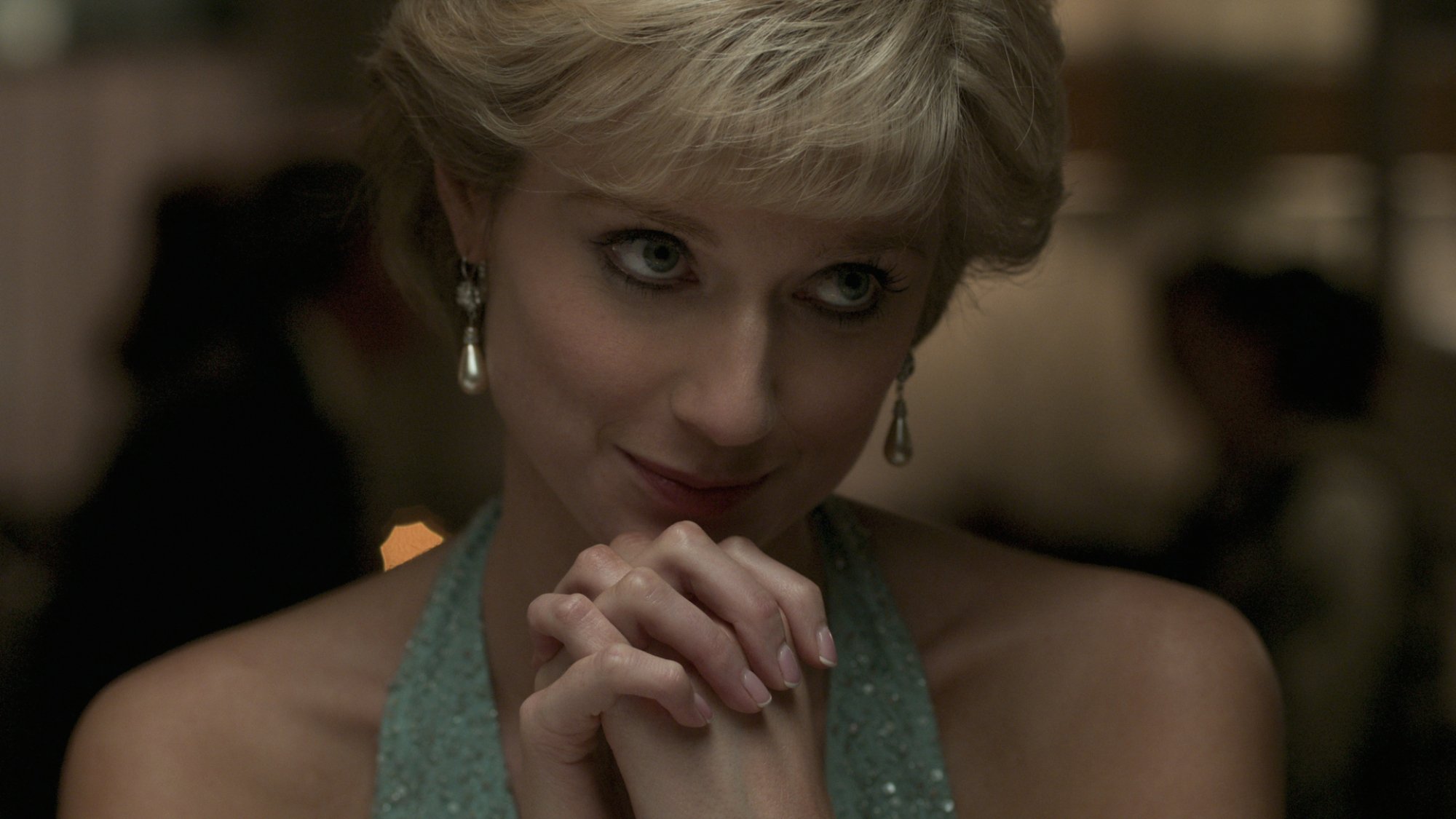
It’s not all in the look.
Credit: Netflix
As in Season 4, Diana and Charles’ rocky relationship hangs by a thread, with Diana given no support by the Royal Family through this, or through her struggles with mental health and media harassment. (Sounds familiar…) Diana’s tempestuous relationship with the media is one of the core themes of Season 5; like in Season 4, The Crown shows Diana beleaguered by paparazzi at every move, foreshadowing tragic events to come. But in this season, with few allies, the Princess of Wales experiences more personal interaction with the press, beginning with a tell-all book by journalist Andrew Morton (with Diana’s secret cooperation), and culminating in the explosive, unethically procured 1995 interview with Martin Bashir (played with perfect intensity by Prasanna Puwanarajah) on the BBC’s Panorama.
During her recording sessions for Morton, Diana describes herself “like a lamb to the slaughter,” and explains why she decided to do the book. “It finally dawned on me that unless I get my side of the story out there, people will never understand how it’s really been for me,” she says in a defeated yet decorous tone, almost like it’s the first time anyone had ever asked. In these interviews, Diana speaks about her struggles with mental health, her eating disorder, and suicide attempts — moments which draw undeniable parallels with interviews with her son, Prince Harry, and his wife, Meghan, Duchess of Sussex, decades later.
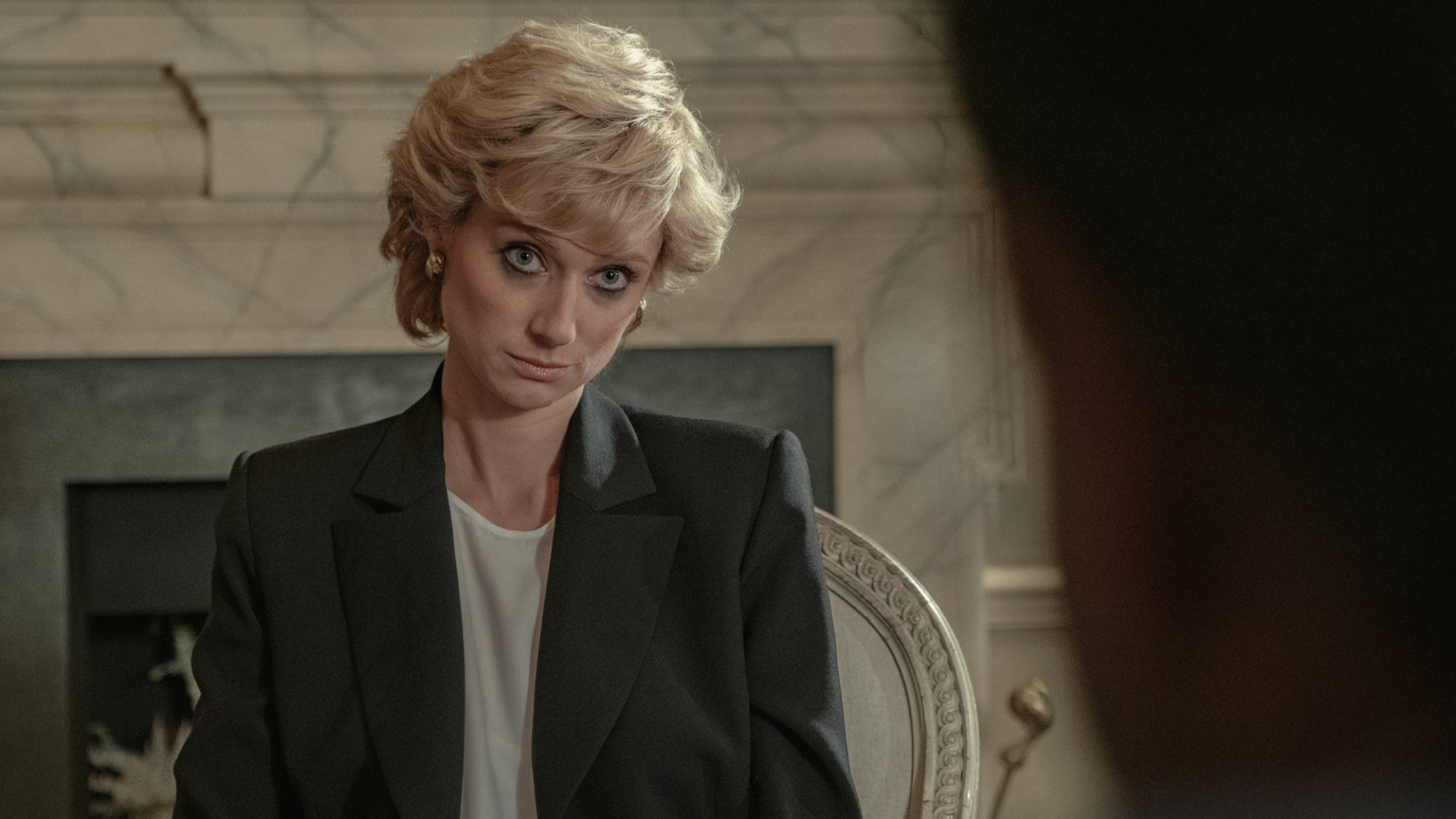
“The Crown” re-enacts Diana’s 1995 BBC interview with Martin Bashir.
Credit: Netflix
Episodes 8 and 9 see Debicki reenacting the most famous moments from Diana’s interview with Bashir — “There were three of us in this marriage” — resulting in a shell-shocked Buckingham Palace. Debicki’s ability to communicate Diana’s inner turmoil during this interview is staggering, potentially leaving viewers as speechless as the royals. The Crown allows the audience to sit with the family’s imagined responses to it, including an outraged Charles.
In one of the greatest scenes of the season that sees two exceptional actors, Debicki and Staunton, going head to head, Diana tries to explain her reasoning for the interview to the Queen. “I’ve so often been shut out, left to cope on my own. I’ve suffered from lack of sympathy and feeling and compassion,” Diana softly explains in episode 8. However, the Queen shows no sympathy, instead calling her a “broken record,” chastising her for using a public forum to address private matters, and insisting she always stands up for Diana to inner-circle critics.
The Crown notably legitimises Diana’s anxiety and paranoia over being spied on, including scenes in which she hears crackling on the phone indicating a wire tap, and scenes in which she or those close to her are threatened by unknown assailants. “They’ve been spying on me for years,” Diana says. “They’re all in on it.” But importantly, the series doesn’t just show the side of Diana used against her by the press and the Royal Family, as Debicki leans into Diana’s cheeky and charming nature, bringing complexity and moments of levity to a person experiencing extreme emotional distress and mental health issues.
Driving around town in her Audi and wearing her now-iconic Harvard-sweatshirt-bike-short combo, The Crown offers Diana small moments of rebellion. She gleefully votes “no” for a monarchy watching the Monarchy: The Nation Decides TV debate. When chastised by Charles for “smothering” 13-year-old Prince William on his first day at Eton, she responds with an even bigger public hug. During divorce negotiations, Diana tells her lawyers where Charles can put his settlement fee: “If he’s going to stuff my mouth with gold and hope I gag, that sum had better have eight figures and start with a three.”
“Had I known, I would’ve put on a revenge dress.”
And of course, The Crown gives the people what they want: pitch-perfect costume recreations, thanks to Emmy-winning costume designer Amy Roberts. After Dominic West expertly re-enacts Charles’ TV interview with Jonathan Dimbleby in which he admits his affair, we watch Diana assess her wardrobe with intent, donning one of the most iconic outfits in pop culture history: the so-called revenge dress. Attending Vanity Fair‘s summer party at the Serpentine Gallery, Debicki steps out wearing a version of Christina Stambolian’s stunning, off-the-shoulder black evening gown. If anyone tells you fashion isn’t political, show them this scene. Diana even refers to the outfit later when Charles pays an unexpected visit: “Had I known, I would’ve put on a revenge dress.”
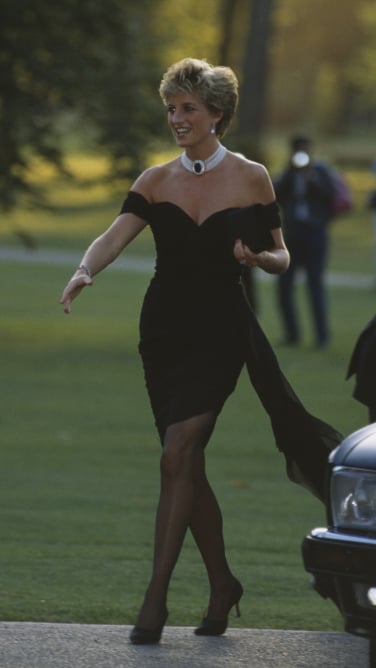
Princess Diana attends the Vanity Fair party in 1994.
Credit: Princess Diana Archive / Getty Images
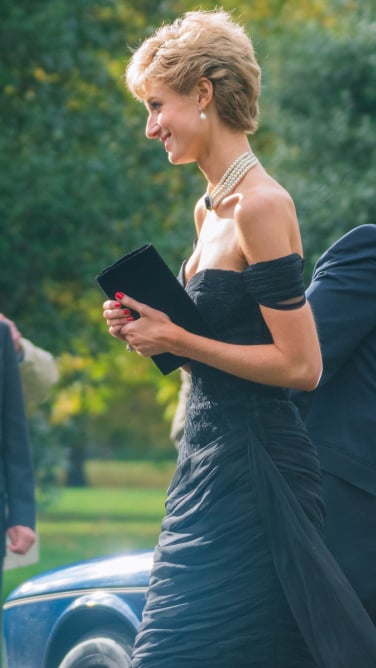
Diana, played by Elizabeth Debicki in “The Crown.”
Credit: Netflix
Despite these moments of empowerment, the series speaks to the loneliness Diana experiences during her separation, suspended between royalty, normality, and celebrity, as she treads water in a new world beyond sterile conventions. Speaking out against the Royal Family, Diana tells Bashir, “I married into a system.”
Love, marriage, and “the system”
As in previous seasons, The Crown Season 5 examines romantic relationships within the Royal Family, and the Queen’s requirement of members to uphold their commitment to marriage under the Church of England’s rules, projecting a false sense of stability. There are many conversations around staying in toxic marriages, with the Queen saying “being happily married is a preference rather than a requirement.” Instead of operating like a family (though insisting on officially calling itself one), the monarchy is constantly referred to as “the system” in the series — possibly a thinly veiled reference to Meghan Markle’s use of “The Firm” for the Royal Family.
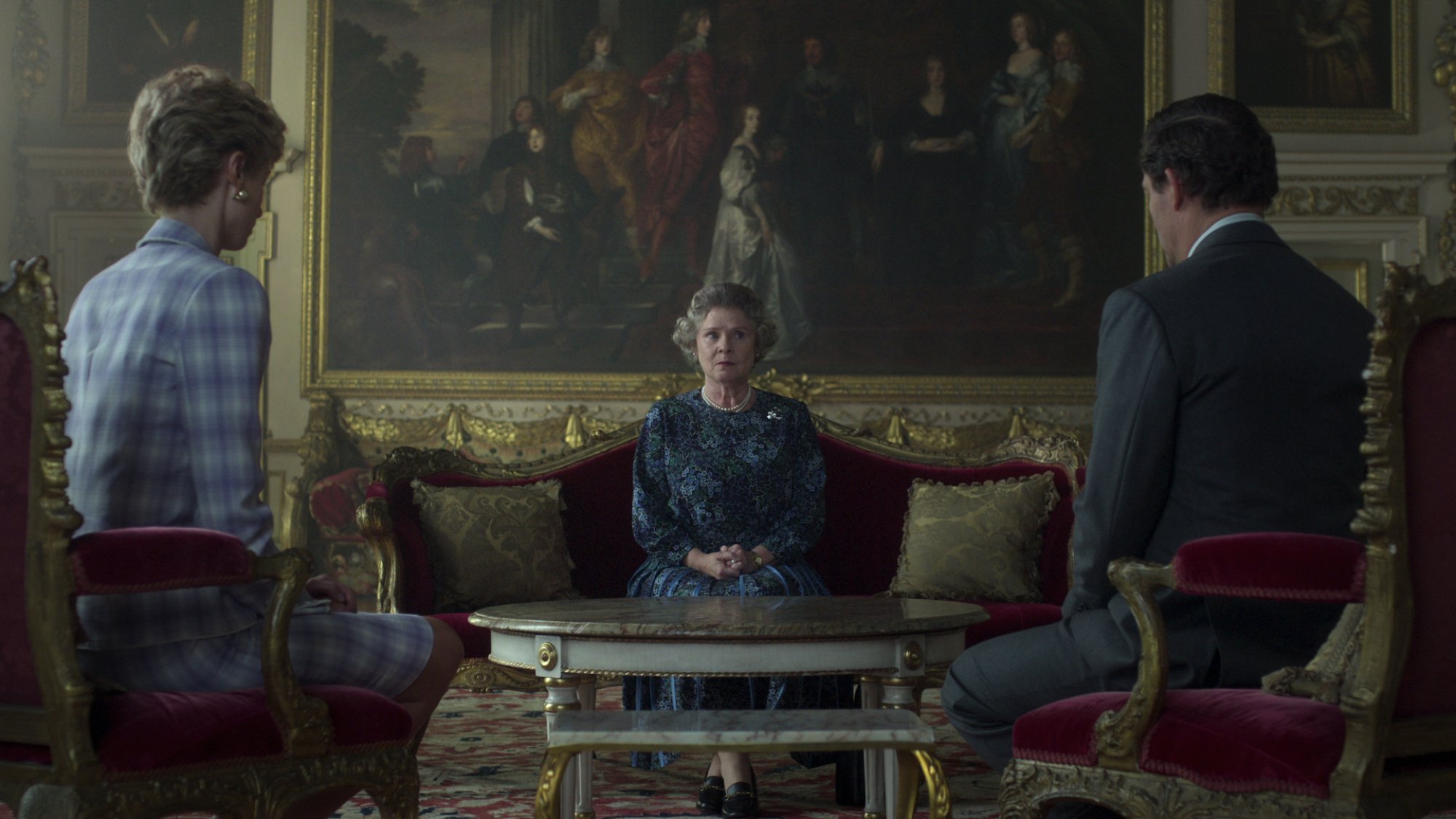
In trouble…
Credit: Netflix
“The system isn’t easy for people like us,” says Princess Margaret (a talented Lesley Manville taking over from Helena Bonham Carter), indicating her own similarities to Diana. “I feel for her. As an outsider. As someone who is emotionally complex. As someone who struggles to lead a straightforward life. As someone with flair and character. And star quality.”
In an imagined conversation between Diana and Prince Philip in Kensington Palace, Debicki and a chilling Jonathan Pryce pace out a scene in which the Duke of Edinburgh initially appears an ally, before firing a warning shot, telling the Princess of Wales, “Don’t rock the boat. Ever. To the grave.” It’s a tense scene, and one of the most superbly acted in the series to date, that begins with empathy and ends in cold, hard brutality, with Philip warning her to “remain loyal to your husband and loyal to this family in public” — discretion, not fidelity, being the important bit. (This value for discretion above all things becomes increasingly awkward with the current goings-on of royals, including, say, Prince Andrew.)
“You’re long past the point of thinking of us as a family. That’s the mistake people make from the beginning, but you understand, it’s a system,” Philip tells Diana, with Pryce pacing the room as Debicki uncomfortably recedes into herself on the couch, like a child about to be admonished. “We can’t just air our grievances and throw bombs in the air as in a normal family, or we end up damaging something much bigger and something much more important: the system.”
Of course, Diana’s not the only one making waves. One of the biggest scandals of Season 5 (and the ’90s) is included almost word for word in episode 5. Yes, we’re talking about Tampongate, in which Charles and Camilla Parker Bowles’ private phone calls were recorded and sold to the Daily Mirror. Without kink-shaming anyone, just try and “feel your way along” through these scenes (sorry). The conversation runs twice in the show, notably in full when the transcripts are published — and here’s where it gets, as Princess Anne unforgivably calls it, “gynecological.” As the camera gets right up close on West’s mouth, the pair utter the infamous Tampax-related lines as the scene cuts to various royals reading their intimate conversation on the front page — including the Queen Mum herself.
All tampons aside, the scene hits different in 2022 considering conversations around privacy and press intrusion has evolved since “Camillagate,” and especially the News International phone hacking scandal. More recently, members of the Royal Family itself have taken legal action against such invasions of privacy, including Prince Harry’s lawsuit against Associated Newspapers, parent company of the Daily Mail and the Mail on Sunday, for “gross breaches of privacy” and allegations of the “commissioning of individuals to surreptitiously listen into and record people’s live, private telephone calls.” There’s Meghan Markle, Duchess of Sussex, successfully suing the Mail on Sunday for publishing a private letter to her father, or Prince William and Kate, Duchess of Cambridge, winning a lawsuit against French magazine Closer for publishing paparazzi photos.
The Crown has long given space to fleshing out Camilla (Olivia Williams) so she’s more than just another Other Woman trope, developing Charles and Camilla’s relationship beyond the salacious headlines. And in Season 5, with the real Camilla now Queen’s Consort, certain lines of dialogue land hard. The Crown has Camilla say out loud things we’ve only dreamed; for example in episode 9, when discussing the possibility of marrying Charles post-divorce, the very real repercussions of marrying the heir to the throne are raised by her PR manager. “I can’t say that word. The Q word,” says Camilla. “Because it’s unsayable. Because it’s treasonous to even contemplate it.”
A (grain of salt) history lesson from The Crown
Beyond imagined conversations within the halls of Buckingham Palace, one of The Crown‘s major drawcards is the series’ dabbling in moments from history without being accurate down to the letter. The Crown constantly draws parallels between the modern state of the Royal Family and the past, sometimes to the show’s detriment. The overt representation of Diana’s explosive interview with Bashir, which was done on Guy Fawkes Day, overlaid with images of bonfires, fireworks, and literal classroom explanations of Fawkes as a “traitor” is possibly a tad over the top.
Several episodes shed more light on the lives of Mohamed Al-Fayed (played by the talented Salim Daw) and his son, Emad El-Din Mohamed Abdel Mena’em Fayed (aka Dodi, Diana’s future lover, played by Khalid Abdalla). The series delves into Al-Fayed’s youth in Egypt in 1946 during British occupation, and later, as a dedicated Anglophile, his obsession with being accepted into British society with the help of Sydney Johnson, former valet to the abdicated King Edward VIII. “Everything in British society begins and ends with the Royal Family,” says Sydney. “If you are seen in their company, if you are known and trusted by them, then all doors will open everywhere else.” Through wealth and property ownership — like his £1.5 billion deal to buy iconic London store and “part of the national soul” Harrods — Al-Fayed yearns to be included in the Royal Family’s inner circle.
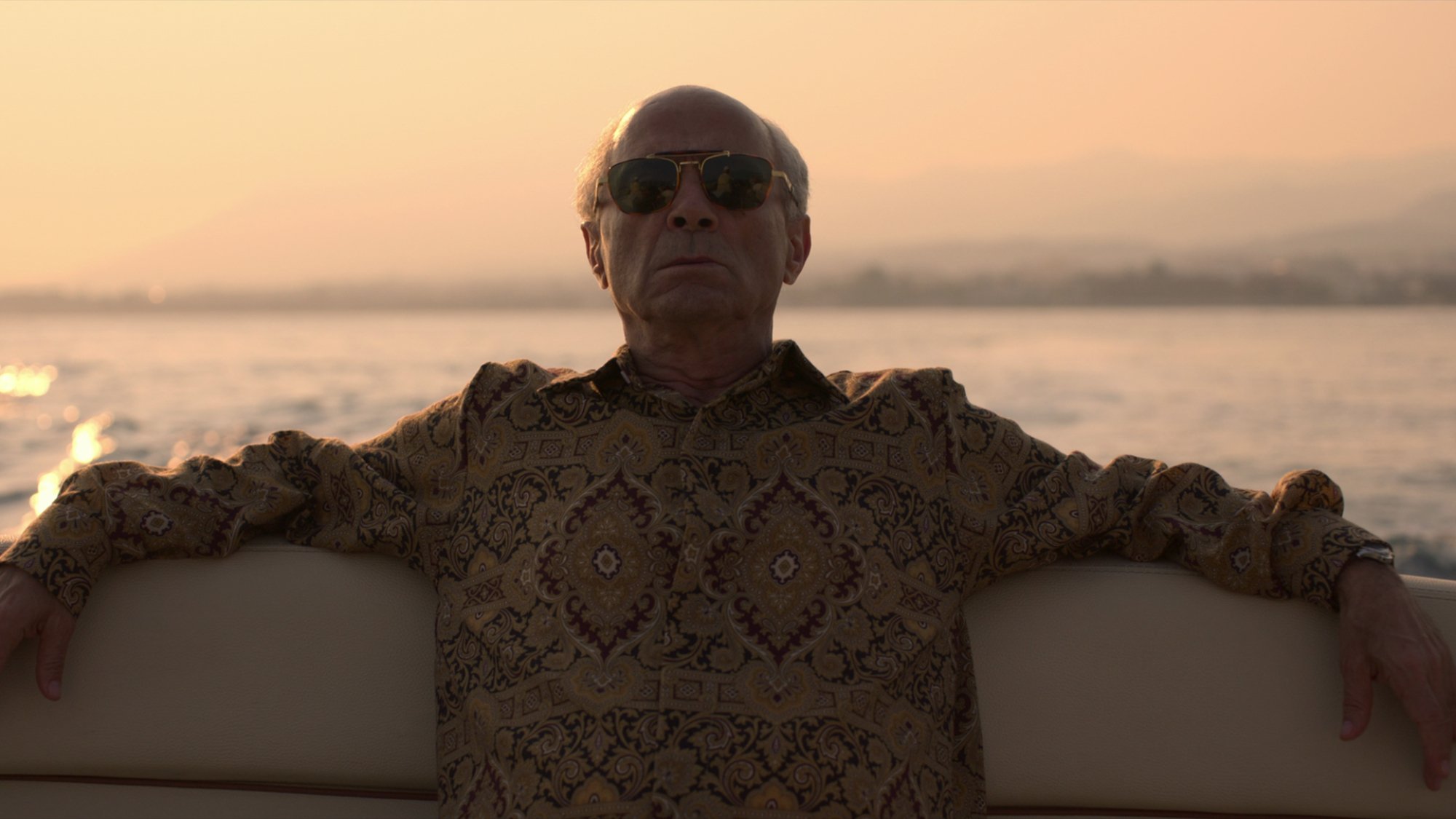
Salim Daw as billionaire Mohamed Al-Fayed.
Credit: Netflix
Meanwhile, episode 6 (“Ipatiev House”) is entirely dedicated to the Royal Family’s ties to the Romanovs. The episode weaves history into the present, as preparations are made for the newly elected Russian president Boris Yeltsin’s first official visit to Britain. At the official dinner, the Queen requests a proper burial for the Romanovs, cousins of the Queen’s grandfather who were murdered by the Bolsheviks — a scene brutally rendered at the beginning of that episode. As DNA testing with the Romanovs’ remains and Prince Philip enters the party, this storyline leads the Duke of Edinburgh into yet another deep dive into his past — we’re still not past that Season 3 episode about Prince Phillip’s mother.
The Crown makes the salient point that we’re usually told stories of our own ancestors that portray them in the greatest possible light, and that finding out awful, unflattering truths is a hard pill to swallow. The Queen’s academic debate with Lady Penny Romsey over her grandparents George V and Queen Mary’s roles in the Romanovs’ fate is awkward, with the Queen saying, “My grandfather would never, could never, do anything to harm his beloved Nicky.” Plus, The Crown has long delved into the repercussions of colonialism, occupied territories, and the British Empire, and episode 10 sees Prince Charles sent on the worn-out Britannia to represent at the sovereign handover of Hong Kong to China on July 1, 1997 — ending 156 years of British rule.
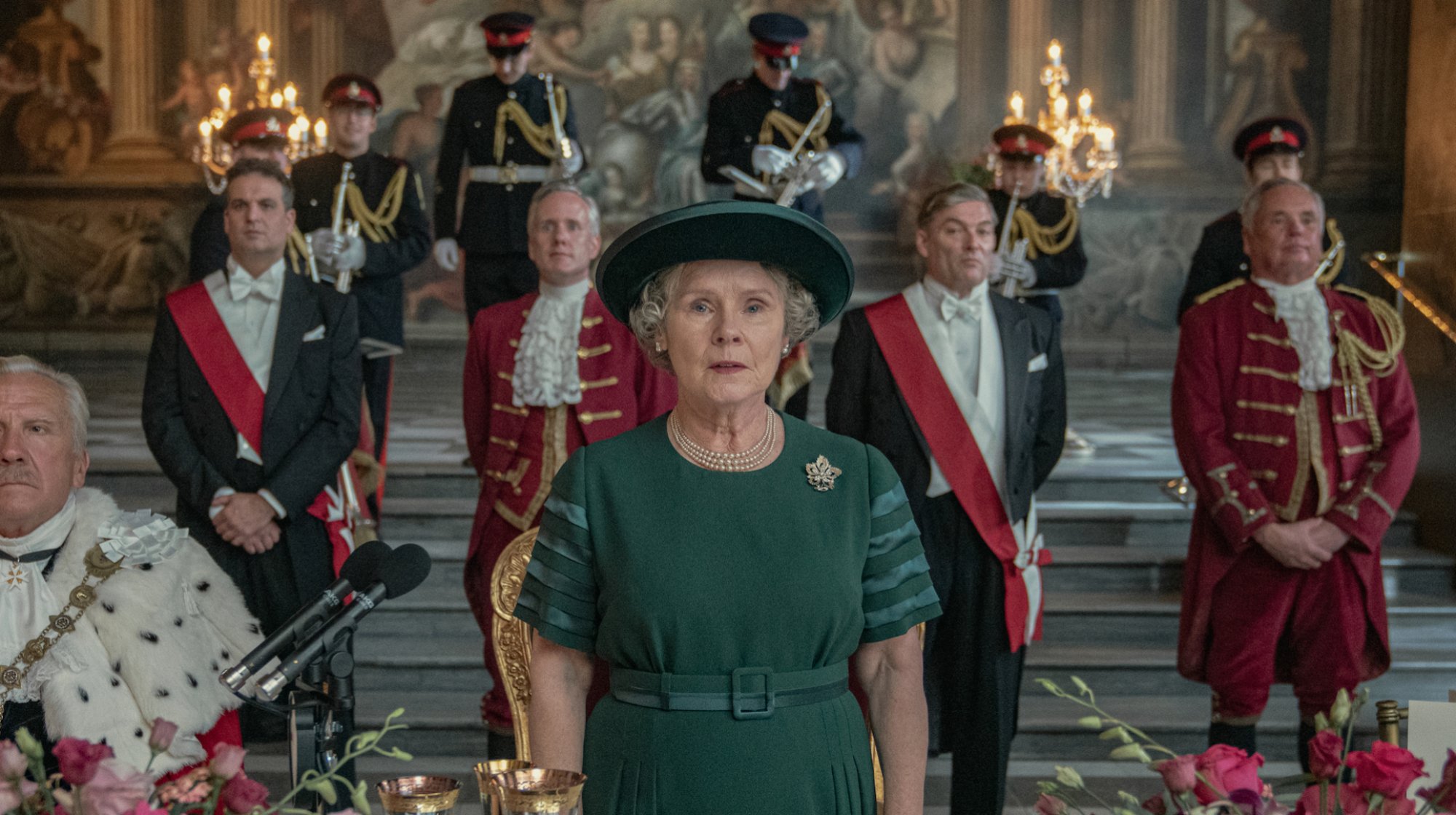
Imelda Staunton takes “The Crown” into a new era.
Credit: Netflix
As we get closer to the present, the need for The Crown lessens as we watch events unfold in real time. Netflix has confirmed that The Crown will indeed end after its sixth season, and with Season 5 leaving the audience sadly aware of the days ahead, particularly for Princess Diana, we can expect next season to be an emotional one. The fifth season of The Crown grapples with important questions of the relatability, role, and financial standing of the Royal Family in a time where these issues are still extremely prevalent. “The system,” more splintered and problematic than ever though still standing, continues to be publicly scrutinised.
-

 Entertainment4 days ago
Entertainment4 days agoThe 5 greatest fantasy shows to watch if you liked ‘House of the Dragon’ and ‘The Lord of the Rings: The Rings of Power’
-
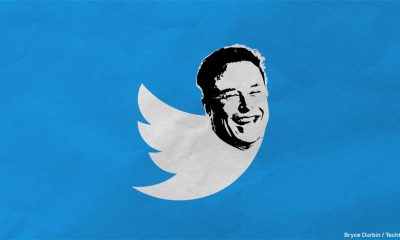
 Business5 days ago
Business5 days agoElon guts Twitter, Google shutters Hangouts, and the tech layoffs continue
-
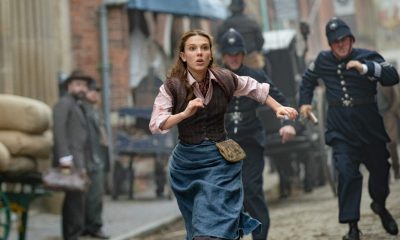
 Entertainment6 days ago
Entertainment6 days agoThe Matchgirls Strike in ‘Enola Holmes 2’ was a real event. Here’s what happened.
-

 Business7 days ago
Business7 days agoTwitter’s mass layoffs are set to begin Friday morning
-

 Entertainment7 days ago
Entertainment7 days ago‘Selena Gomez: My Mind & Me’ review: What’s missing from the film
-
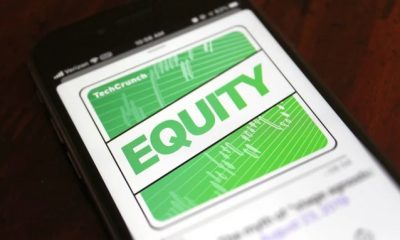
 Business6 days ago
Business6 days agoMost of the unicorns aren’t
-
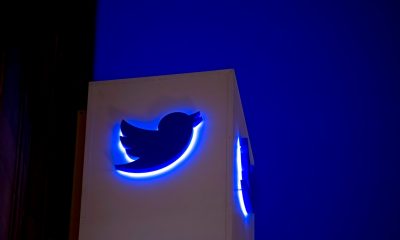
 Business6 days ago
Business6 days agoDaily Crunch: Twitter layoffs violated federal worker protections, class action lawsuit alleges
-

 Entertainment6 days ago
Entertainment6 days agoThe Try Guys survived a PR crisis. Here’s how they did it.



